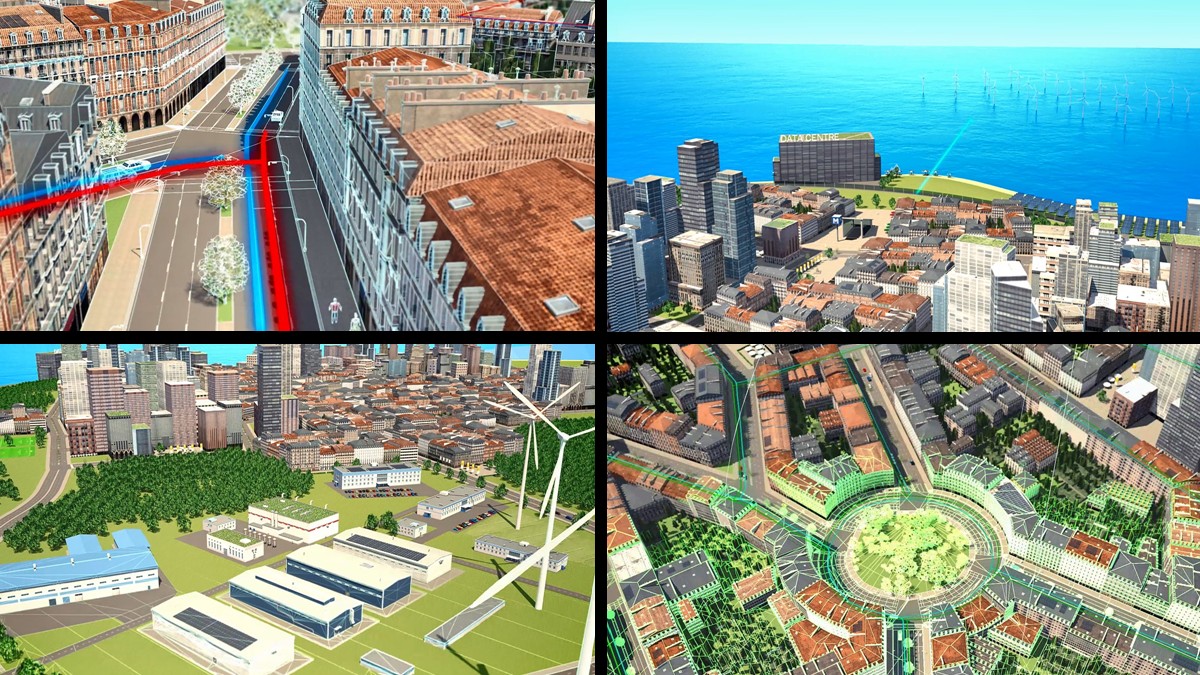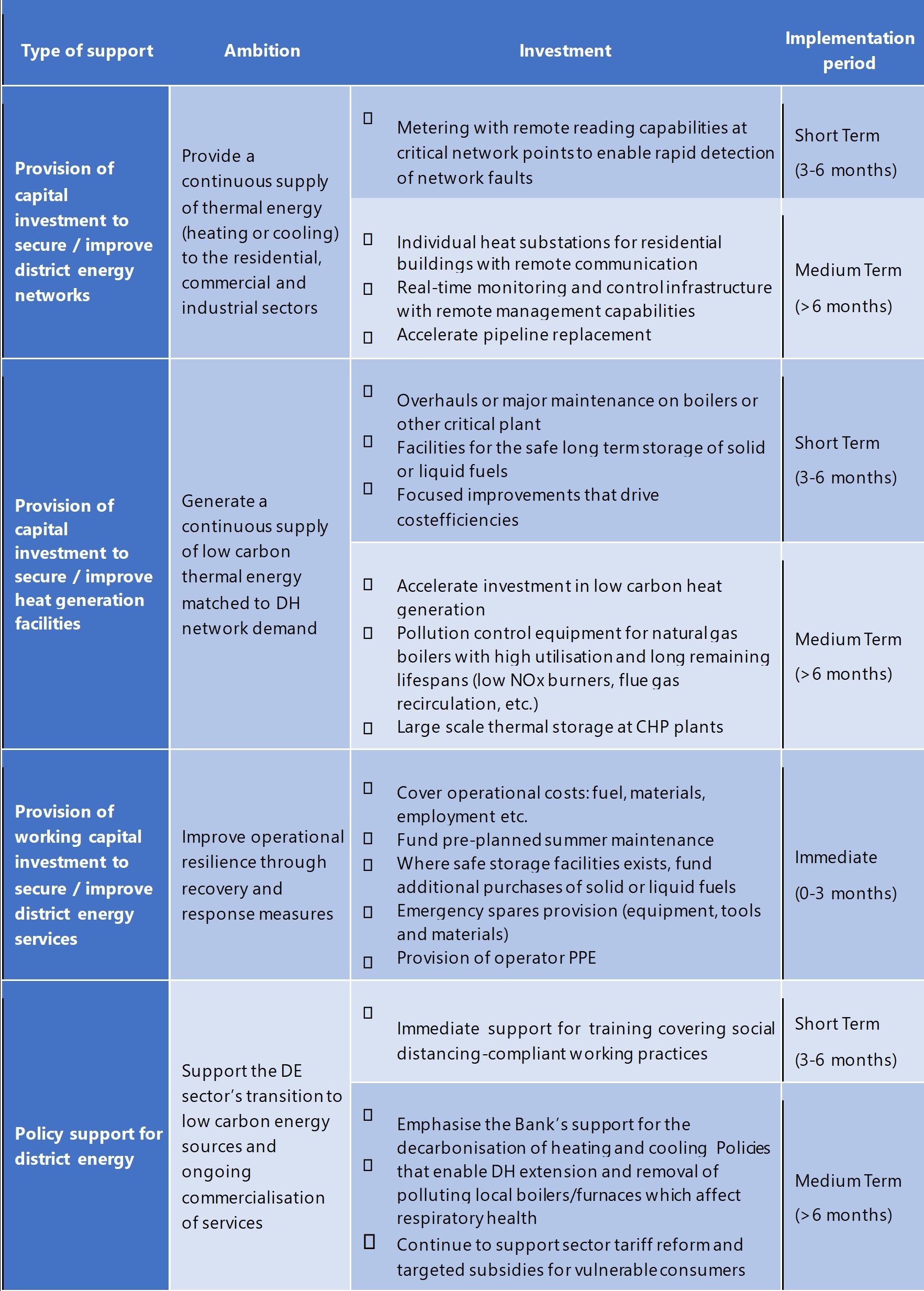COVID-19: Challenges and opportunities in the district energy sector
- News
- 25 June 2020
- by Balkan Green Energy News
District energy systems are commonplace in urban centers and district heating is the most common form of heating for urban homes and businesses in many of EBRD’s countries of operations.

Author: Greg Gebrail, Energy Specialist and Bojan Bogdanović, Fund Manager – Renewable District Energy in the Western Balkans Fund (ReDEWeB), Sustainable Infrastructure Group in European Bank for Reconstruction and Development (EBRD). Please note that this article was originally published by Balkan Green Energy News, here.
*On June 30, following the publication of this document, the European Bank for Reconstruction and Development (EBRD) is organizing a live session titled “Resilient, low carbon district energy in the age of COVID-19.” This webinar will move beyond the immediate impacts of the pandemic and focus on how investment in reliability, decarbonization, and network expansion can contribute to a resilient recovery and economic stimulus. Click here to register or for more information.
District energy systems are commonplace in urban centers and district heating is the most common form of heating for urban homes and businesses in many of EBRD’s countries of operations. Compared to other utility sectors, the seasonal timing of the COVID-19 pandemic means the immediate risk surrounding increased demand for services is minimal. However, the outbreak and the drastic measures taken in response raise issues that sector operators and policymakers should be aware of which are outlined below:
Demand
With the vast majority of the population now required to stay at home, an increase in residential demand for space heating and domestic hot water would be expected, alongside a significant decrease in commercial and industrial heat demand. Fortunately, by the time EBRD regions locked down, the period of peak heating demand had already passed and district heating (DH) systems were operating with sufficient spare generation capacity. As the lockdown progressed, the weather got milder and systems either have ended their heating seasons. This is also applicable to regions where residents rely on natural gas networks and individual boilers for heating.
District cooling systems are not yet widespread in our countries of operations (COOs), but when the pandemic takes hold in warmer countries during the summer, lockdowns could increase residential cooling demand and strain urban electricity grids.
Operations
Public utilities such as DH operators are under pressure to deliver critical services while also facing a shortage of working capital due to Government policies suspending or delaying tariff payments by the population. They may no longer have sufficient working capital to keep systems operational, pay staff or fund planned infrastructure investments (which may include essential maintenance that must be completed in the summer months). The risk here is obvious and EBRD can support DE operators to overcome this risk through the Bank’s new Solidarity Package.
Fuel supply may be impacted by the working capital issues outlined above but the pandemic is unlikely to cause interruptions unless there is a severe economic shock or political unrest.
Workforce absences are a risk, particularly in COOs where there is still widespread manual supervision and operation of system infrastructure. Social distancing measures could also affect maintenance activities and operators will have to train staff and provide appropriate Personal Protective Equipment (PPE), especially where contact with the public is required. The situation could be exacerbated by the age profile of the DH sector across the EBRD region; a significant portion of the workforce is over fifty years oldi and at a greater risk of respiratory illness. The above points could all negatively affect the security of heating supply.
Investment
The shortage of working capital and immediate funding needs for emergency services could result in a freeze or substantial reduction in capital investments, including projects already under construction. Delaying maintenance or system improvements will negatively affect system reliability and operational efficiency in the medium and longer term.
Transition to Low Carbon Energy Sources
The combination of depressed energy demand due to the pandemic and the price war between major producers has caused a drastic drop in fossil fuel prices and demand for CO2 allowances (EU ETS). There is concern that this will reduce the impetus to pursue further decarbonization in the heating and cooling sector and the temporary price cut may negatively influence planned investments or policies that support renewable or waste heat-based solutions. To maintain momentum, it is important that support for low carbon solutions continues and is made more robust in the face of these challenges.
Long Term Impacts
The drop in fossil fuel prices will negatively affect government revenues in COOs with a large oil and gas sector such as Kazakhstan. Depending on the length of the downturn, subsidies or artificially low utility tariffs may no longer be sustainable and tariff reform may move up the agenda. The opposite may be true in other countries where authorities may face longerterm pressure to freeze or reduce tariffs in the face of increased unemployment or widespread economic hardship.
Rudimentary home heating systems based on solid fuels and local fossil-fuel based boilers are key sources of urban air pollution. The pandemic has also further highlighted the negative impact of air pollution on public health. Researchers at Harvard have noted an alarming correlation between levels of fine particulate pollution in American counties and death rates from COVID-19 in those counties.ii This may further increase the long-term trend of government authorities or policymakers supporting the expansion of DH services to combat poor air quality in their cities and regions.
In the absence of a vaccine, there is risk that COVID-19 may follow a similar pattern to the seasonal flu and re-emerge in late autumn or winter. The risk of another outbreak and lockdown that coincides with the beginning of the heating season or occurs during the colder winter months further emphasises the importance of completing summer maintenance activities, increasing system redundancy and putting contingency plans in place in case of high staff absences. Ensuring the long-term reliability of systems and security of heat supply will be critical to protecting vulnerable residents who would be most disadvantaged if service is interrupted.
Possible EBRD response for district energy services:

i The average age of the ~2000 staff at the Belgrade DH operator is 50 years old (2020 Business Plan). ii The Economist – 25th of April 2020 (link) and 18th of April 2020 (link)
Latest News
-

-
 26.10.2021 Celsius Summit 2021 – Energy Democracy
26.10.2021 Celsius Summit 2021 – Energy Democracy

